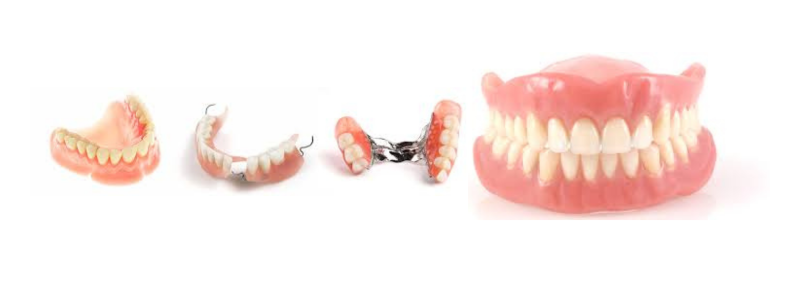Dental Prosthetics
How Dental Prosthetics Replace Missing Teeth
Losing a tooth might seem a minor thing, but it can have a big impact on your life. A missing tooth can change the way you eat, speak, or even smile. Many individuals face this common problem, but you can avoid it becoming a permanent one by taking dental prosthetics. It is a solution offered in modern dentistry to restore your smile and your health. They are designed to look and function just like your natural teeth, giving you a reason to smile freely. This blog at Jamaica 26 Dentistry guide you to fill missing gaps with long lasting dental prosthetics.
The Problem with Missing Teeth
Why a Missing Tooth is an Issue
A single missing tooth creates a gap in your smile, and this is one of the most obvious problems. The gap can make you feel reluctant and may cause you to hide your smile. The real is far beyond appearance. The space left by a missing tooth can affect your ability to chew food properly. When you chew, the force is distributed across all your teeth. When one tooth is gone, the remaining teeth must work harder. This can lead to extra wear and tear on remaining teeth. Jamaica 26 Dentistry is here to help you make your smile more beautiful.
How Gaps Affect Your Health
When a tooth is missing, the consequences for your oral health are much more serious than you might think. The teeth with that space lose their support and begin to shift and tilt. This shifting can cause your bite to become misaligned. A misaligned bite can lead to headaches, jaw pain, and difficulty in speaking.
The most critical health problem is bone loss in your jaw. Your tooth roots support the jawbone to keep it healthy and strong. This support ends with the removal of the tooth. The bone underneath the space begins to resorb, or deteriorate, because it is no longer needed. This bone loss can weaken your jaw and change the shape of your face, making you look older. It is a progressive issue that gets worse over time. Replacing the missing tooth with a prosthetic that stimulates the bone is essential for preventing this damage.
Types of Dental Prosthetics
Dentures
Dentures are a common and well-known type of dental prosthetic. They are removable appliances used to replace several missing teeth or even an entire arch of teeth. Dentures are made of a gum-colored plastic base that holds a set of artificial teeth. They rest directly on your gums and are held in place by suction or an adhesive.
Dentures have a long history of being an effective tooth replacement option. They are often a more affordable choice and can be made relatively quickly. However, because they are not anchored to the jawbone, they can sometimes feel unstable or slip while you are eating or speaking. They also do not prevent the bone loss that occurs when teeth are missing. Over time, as the jawbone shrinks, the fit of the dentures can change, requiring them to be relined or replaced.
Bridges
A dental bridge is a non-removable prosthetic that is used to replace one or more missing teeth. It gets its name because it “bridges” the gap between two existing teeth. A bridge consists of a false tooth, called a pontic, which is held in place by crowns placed on the natural teeth on either side of the gap. The adjacent teeth, known as supportive or anchor teeth, must be shaped to support the crowns.
Bridges offer more stability than the traditional dentures because they are permanently cemented into place. This allows for a more natural feel and better chewing function. However, a major drawback of a bridge is that it requires the modification of healthy teeth. The abutment teeth must be filed down to fit the crowns. This can make them more vulnerable to future damage. Like dentures, bridges do not stop bone loss from happening under the missing tooth, as they do not have a root to stimulate the jawbone.
Dental Implants
Dental implants are widely regarded as the highest quality and most advanced option for replacing missing teeth. An implant is a small, screw-shaped post, usually made of titanium. It is surgically placed into the jawbone where the tooth root used to be. The titanium post fuses with the bone gradually in a process called osseointegration. This creates an incredibly strong and stable foundation, much like a natural tooth root. Once the implant gets fully integrated, a customized crown is attached to it which completes the restoration.
Dental implants are the only prosthetic that replaces the entire tooth structure, from the root to the crown. This unique feature means they can prevent the jawbone from deteriorating. By stimulating the bone, the implant keeps the jawbone healthy and preserves your natural facial structure. Implants feel and function just like natural teeth, allowing you to eat, speak, and smile with complete confidence and without any risk of slipping or discomfort.
The Process of Getting a Prosthetic
The Initial Consultation
The journey to getting a dental prosthetic always begins with a comprehensive consultation with a dental professional. During this visit, your dentist will examine your mouth, take X-rays, and discuss your health history. They will assess the condition of your gums, jawbone, and remaining teeth to determine which treatment option is best for you. This is the perfect time to ask questions and share your goals for your smile. Your dentist will then create a personalized treatment plan that includes the steps, timeline, and cost.
Making the Prosthetic
Once a treatment plan is in place, the next step is creating your customized prosthetic. This process is different for each type of prosthetic. For a dental bridge, impressions of your teeth are taken to ensure the bridge and crowns fit perfectly. For dentures, your dentist will take detailed measurements and molds of your mouth to create a prosthetic that fits accurately and feels comfortable. Then, a final impression is taken to design the permanent, natural-looking crown. All of these prosthetics are made in a dental lab by skilled technicians.
The Fitting
The final step is the fitting of the prosthetic. For dentures, your dentist will ensure that they fit correctly and make any necessary adjustments for comfort. For a bridge, the supportive teeth are prepared and the bridge is permanently cemented into place. After the implant has fully joined with your jawbone, the final crown (the artificial tooth) is placed on top.
This final appointment completes the process, leaving you with a restored smile and improved function. Your dentist will also give you detailed instructions on how to care for your new prosthetic.
Why You Should Consider Replacements
Restoring Your Appearance
The most immediate and noticeable benefit of replacing missing teeth is the restoration of your appearance. A full, healthy smile can have an immense effect on your self-image. When you do not have to think about gaps in your teeth, you can speak, laugh, and interact with others more freely. This boost in confidence can improve your social life and professional interactions.
Improving Your Oral Health
The replacement of teeth also contributes to your overall oral health. By filling the empty space, you prevent the surrounding teeth from shifting. This keeps your bite aligned and reduces the risk of future dental problems. For those who choose dental implants, the jawbone gets preserved which prevents the loss of bone mass. This loss can affect the stability of your other teeth and the structure of your face. By maintaining a complete dental structure, you help to keep your entire mouth healthy and strong.
Getting Back Your Confidence
The ability to eat your favorite foods without pain or worry is a simple pleasure that cannot be achieved with missing teeth. Dental prosthetics, especially bridges and implants can restore your chewing ability. You no longer have to avoid certain foods or feel embarrassed while eating with others.
Finding the Right Solution
Factors to Consider
Choosing the right dental prosthetic is your personal decision that depends on several factors. Your general oral health, the condition of your jawbone, and the number of teeth you need to replace are deciding factors. Your budget and personal preferences for a removable or a permanent solution are also important considerations. It is a decision that should not be made in a hurry and should be made with as much information as possible.
Talking to a Professional
The most important step in finding the right solution is to talk to a qualified dental professional. They have the knowledge and experience to guide you through all the options. They can assess your situation and help you understand the benefits and drawbacks of each prosthetic. A dentist will work with you to create a personalized treatment plan that not only restores your smile but also ensures your long-term oral health.
FAQs
What is a dental prosthetic?
A dental prosthetic is a device designed to replace one or more missing teeth. It can be a denture, a bridge, or a dental implant with a crown.
Why is it important to replace a missing tooth?
Replacing a missing tooth is important for your dental functioning and overall health. It prevents your other teeth from shifting, helps you chew food properly, and can stop the jawbone from shrinking, which can change the shape of your face over time.
How long do dental prosthetics last?
The lifespan of prosthetics varies according to their type. Dentures may need to be replaced or adjusted every 5-10 years. Bridges can last 10-15 years. Dental implants can last for a lifetime if they are kept with care.
Does the process of getting a prosthetic hurt?
The process is generally not painful. Your dentist will use anesthesia to numb the area during any procedure. You might experience some minor soreness, which can be managed with painkillers.

